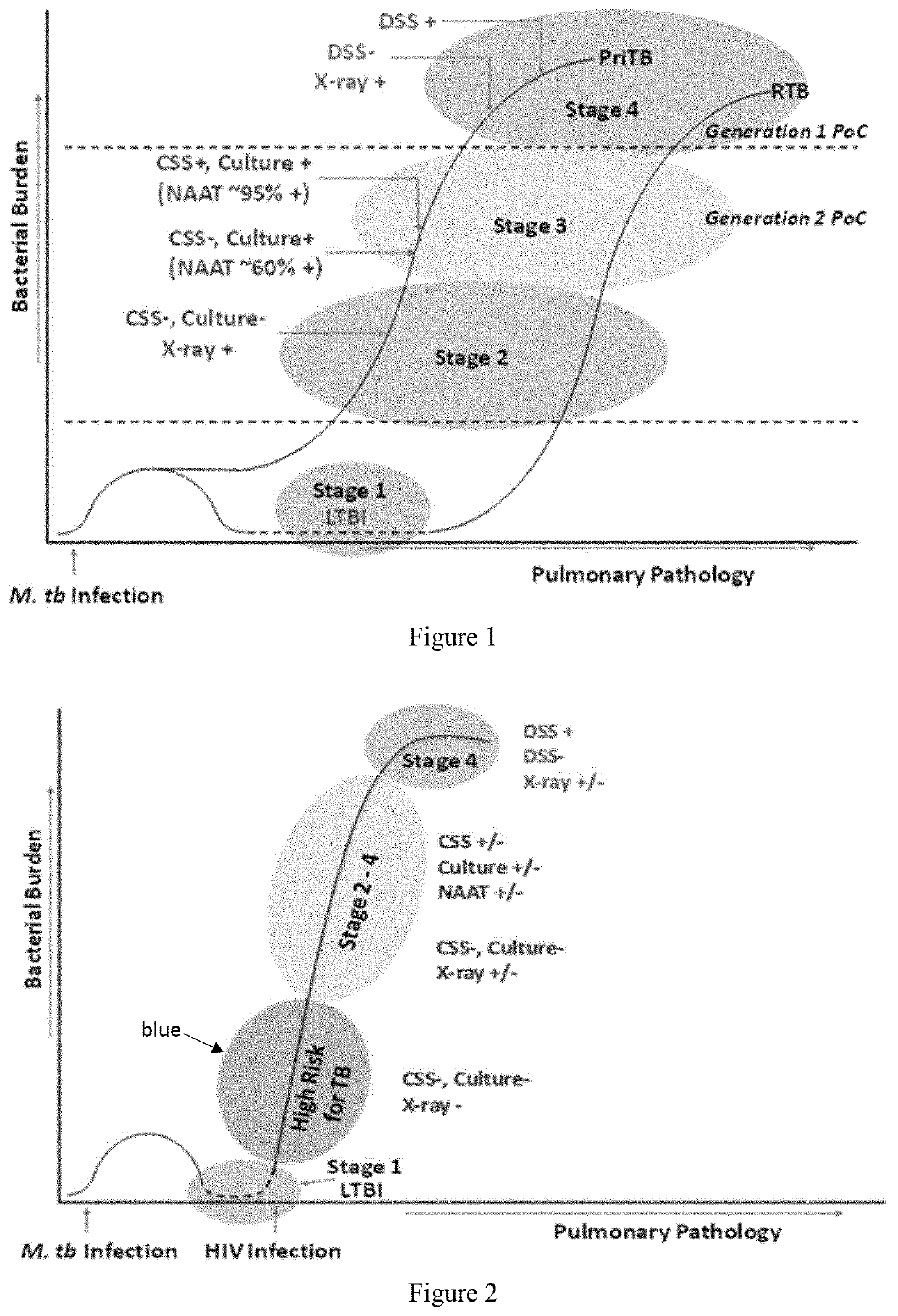Peptides of M. tuberculosis for a screening test for HIV positive patients at high-risk for tuberculosis
a technology of peptides and tuberculosis, applied in the field of tuberculosis, can solve the problems of morbidity and mortality, 10-15% annual risk of progressing, and create a public health challenge of unparalleled proportions, and achieve the effect of high risk of developing and higher risk of latent tb progression
- Summary
- Abstract
- Description
- Claims
- Application Information
AI Technical Summary
Benefits of technology
Problems solved by technology
Method used
Image
Examples
example 1
[0082]This example provides the results of prospective studies with sera from asymptomatic HIV+ patients who progressed to clinical TB and were put on ATT. We conducted these prospective studies in HIV+ patients in India, which contributes a third of the global burden of TB and where 60˜80% of the urban population is estimated to have LTBI, making this an ideal geographical location for the prospective studies.
[0083]The patients were recruited from an immunodeficiency clinic. Patients were screened for HIV infection by ELISA; those testing HIV+ were confirmed by 2 rapid tests provided by National AIDS Control Organization (NACO). Confirmed HIV+ patients were subjected to routine hematological investigations, (CBC, ESR, CD4+ T cell counts), liver function tests (SGOT / SGPT, Alkaline phosphatase), renal function tests (blood urea, serum creatinine), blood sugar, chest X ray, VDRL, HBs Ag, Anti HCV Abs).
[0084]For the studies, ART naive asymptomatic HIV+ patients (n=175) were recruited a...
PUM
| Property | Measurement | Unit |
|---|---|---|
| nucleic acid amplification test | aaaaa | aaaaa |
| concentration | aaaaa | aaaaa |
| microscopy | aaaaa | aaaaa |
Abstract
Description
Claims
Application Information
 Login to View More
Login to View More - R&D
- Intellectual Property
- Life Sciences
- Materials
- Tech Scout
- Unparalleled Data Quality
- Higher Quality Content
- 60% Fewer Hallucinations
Browse by: Latest US Patents, China's latest patents, Technical Efficacy Thesaurus, Application Domain, Technology Topic, Popular Technical Reports.
© 2025 PatSnap. All rights reserved.Legal|Privacy policy|Modern Slavery Act Transparency Statement|Sitemap|About US| Contact US: help@patsnap.com

